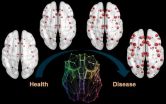(Press-News.org) A Washington family of four must spend 46 percent more on average to make ends meet today than 13 years ago, according to a new report from the University of Washington.
The Self-Sufficiency Standard for Washington State 2014, released Thursday (Nov. 20), provides a sobering look at how much it costs individuals and families statewide to meet basic needs -- and how far short they're falling.
The study found that Washington families with two adults, a preschooler and a school-aged child saw the costs of meeting their most basic requirements jump as much as 72 percent between 2001 and 2014, depending on where they live. But median wages increased just 21 percent during that time.
"We're looking at a bigger and bigger crunch for people struggling to survive economically," said Diana Pearce, author of the report and the director of the Center for Women's Welfare at the UW School of Social Work.
"Everything's going up, even though people's wages are not," Pearce said. "Costs for basic needs are even going up faster than overall inflation."
Just in the last three years, the cost of basic needs increased 10 percent on average for four-person Washington families, while wages increased just 4 percent.
The report, funded by the Workforce Development Council of Seattle-King County, calculates how much individuals and families must earn in each of the state's 39 counties to cover housing, food, child care, health care, taxes, transportation and other necessities without outside assistance. Costs are based on the numbers of adults and children of varying ages in each household and where the family lives, with 152 different family types included in the report.
Not surprisingly, families with young children needed considerably more money to stay afloat. For example, a single person in Tacoma needs to make $11.06 an hour, or $23,360 annually, to meet basic needs, while a single parent with a preschooler and school-age child must make at least $26.02 hourly, or $54,946 annually.
"That's just the basics," Pearce pointed out. "There's no pizza or latte in the food budget."
The study also found:
Health care and child care were the biggest factors driving up costs for four-person families in Washington, increasing 68 and 70 percent, respectively, between 2001 and 2014. By comparison, housing costs went up 40 percent.
Costs for a four-person family went up the most in Seattle and Walla Walla County, with increases of 62 and 72 percent, respectively.
For a family with a single parent, a preschooler and a school-age child, Seattle was the third-most-expensive city of 14 nationwide, after San Francisco and San Diego.
A Seattle family with two adults, a preschooler and a school-age child needs to make $65,716 annually - the equivalent of more than three full-time minimum wage jobs - to cover costs. In East King County, the same family would need to make $73,914.
A single person in Seattle must make $22,199 to meet basic needs. In East King County, the figure rises to $26,668.
The report also found that of the 10 most common occupations in the state, only two -- software engineering and nursing -- paid enough for a single parent supporting a preschooler and a school-age child to get by in all but the most inexpensive counties, such as Okanogan and Asotin, Pearce said.
Pearce developed the standard while working as the director of a women's organization in Washington, D.C. Since the first report was published in 2001, the standard has been adopted in 37 states and the cities of New York and Washington, D.C.
The Workforce Development Council uses the report in conjunction with a statewide online calculator to help job-seekers figure out what they need to be self-sufficient and connect them with resources that can move them toward that goal.
"The standard serves as an accurate and robust cost-of-living benchmark that supports good career planning and allows us to measure the extent to which our programs help customers progress toward economic self-sufficiency," said Marléna Sessions, the council's chief executive officer.
"Despite our economy's gradual recovery, increases in the cost of living have dramatically outpaced wage growth in Washington state."
The self-sufficiency standard differs from the federal poverty measure by factoring in a range of costs, family composition and geography. The federal poverty level, still the most commonly used benchmark for determining who is defined as poor or in need of public assistance, was created in the 1960s and is based primarily on estimates of minimal food costs. The level is the same nationwide, whether one lives in Manhattan or Mississippi.
"It's so outdated," Pearce said. "It was developed half a century ago, when in two-parent families one parent worked, and one-parent families were on welfare. Child care was rarely a cost.
"Now, basic costs include housing, food, child care, health care, transportation, taxes," she said. "In today's family, you have to budget for all of those things."
INFORMATION:
For more information, contact Pearce at 206-852-3759 (cell) or pearce@uw.edu. To reach Sessions, contact Danielle Wallace at 206-448-0474, ext. 3002, or dwallace@seakingwdc.org.
A new discovery about the atomic structure of uranium dioxide will help scientists select the best computational model to simulate severe nuclear reactor accidents.
Using the Advanced Photon Source (APS), a Department of Energy (DOE) Office of Science User Facility, researchers from DOE's Argonne National Laboratory and Brookhaven National Laboratory, along with Materials Development, Inc., Stony Brook University, and Carnegie Institution of Washington, found that the atomic structure of uranium dioxide (UO2) changes significantly when it melts.
UO2 is the primary ...
The economic burden of diabetes in America continues to climb, exceeding more than $322 billion in excess medical costs and lost productivity in 2012, or more than $1,000 for every American, according to a study being published in the December issue of Diabetes Care that also includes a state-by-state breakdown of the prevalence and costs associated with diabetes. Additionally, increased costs associated with prediabetes and undiagnosed diabetes highlight the growing importance of prevention and early intervention.
The study, which follows up on a similar report published ...
TAMPA, Fla. - Moffitt Cancer Center researchers are taking a unique approach to understanding and investigating cancer by utilizing evolutionary principles and computational modeling to examine the role of specific genetic mutations in the Darwinian struggle among tumor and normal cells during cancer growth.
Cells become malignant by acquiring genetic mutations that lead to increased survival and reproduction. Many researchers in the past have viewed cancer progression as the result of unlimited accumulation of these genetic mutations. However, Moffitt researchers ...
Fast facts:
The study shows that obesity leads to subclinical heart muscle injury and increases the risk for heart failure even among people without overt heart disease and independently of other cardiovascular risk factors such as diabetes, high blood pressure and high cholesterol.
The silent heart damage was detected by using an ultrasensitive test that measures the levels of a protein released by the cells of the heart muscle during injury.
The findings suggest that obesity is an independent driver of heart muscle damage, and that obese individuals, even when free ...
Massachusetts General Hospital (MGH) investigators have developed a system to accurately track the dynamic process of falling asleep, something has not been possible with existing techniques. In their report in the October issue of the open-access journal PLOS Computational Biology, the research team describes how combining key physiologic measurements with a behavioral task that does not interfere with sleep onset gives a better picture of the gradual process of falling asleep. In addition to being a powerful tool for future research, the system could provide valuable ...
New findings by a Johns Hopkins University-led team reveal long unknown details about carbon deep beneath the Earth's surface and suggest ways this subterranean carbon might have influenced the history of life on the planet.
The team also developed a new, related theory about how diamonds form in the Earth's mantle.
For decades scientists have had little understanding of how carbon behaved deep below the Earth's surface even as they learned more and more about the element's vital role at the planet's crust. Using a model created by Johns Hopkins geochemist Dimitri ...
Twenty-five years ago this month, the countries that compose the United Nations reached a landmark agreement that laid the foundation for much-needed strengthening of children's rights and protections in nearly every country around the world.
Today, the Convention on the Rights of the Child remains the only formal global effort to improve children's rights and the most widely ratified human rights treaty in history. Only three U.N. member nations have not ratified the treaty: Somalia, South Sudan and the United States.
"The Convention on the Rights of the Child is a ...
Ebola GP protein covers the virus' surface and is shed from infected cells during infection. A study published on November 20th in PLOS Pathogens reports that shed GP can trigger massive dysregulation of the immune response and affect the permeability of blood vessels
Ebola virus has seven genes. One of them, called GP, codes for two related proteins: a shorter secreted one and a longer one that spans the viral wall and sticks out of its surface. During virus infection, some of the surface GP is cut off by a human enzyme and is subsequently shed from infected cells. High ...
Researchers from the Montreal Neurological Institute have used a model inspired by patterns of epidemic disease spreading to map how misfolded proteins propagate within the brain.
Proteins which fail to configure correctly (misfolded proteins) are associated with aging and several human neurodegenerative diseases, such as Alzheimer's. In research published in this week's PLOS Computational Biology, Yasser Iturria Medina and colleagues analyze over 700 individual Amyloid-beta proteins imaging datasets to conclude that the propagation of these misfolded proteins, associated ...
An international team of researchers has shown that it may be possible to improve the effectiveness of the seasonal flu vaccine by 'pre-empting' the evolution of the influenza virus.
In a study published today in the journal Science, the researchers, led by the University of Cambridge, describe how an immunological phenomenon they refer to as a 'back boost' suggests that it may be better to pre-emptively vaccinate against likely future strains than to use a strain already circulating in the human population.
Influenza is a notoriously difficult virus against which to ...



